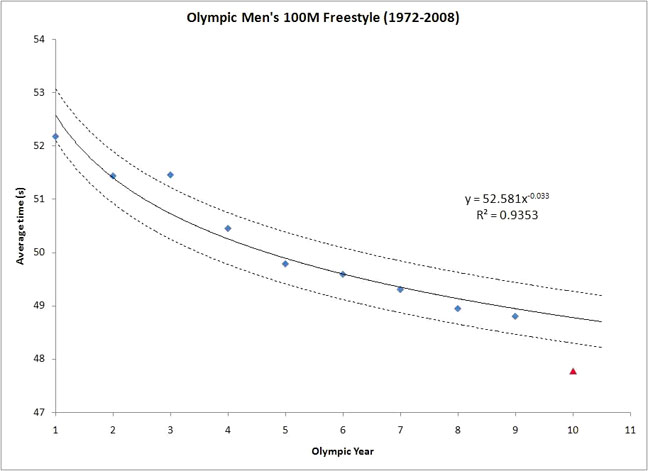OLYMPIC SWIMMING PERFORMANCES DO NOT ALWAYS IMPROVE IN A CONSISTENT MANNER
Brammer, C. L., Tanner, D. A., & Stager, J. M. (2009). Identification of bias in the natural progression of swim performance. ACSM 56th Annual Meeting, Seattle, Washington. Presentation number 1843.
![]()
This study evaluated elite swim performances to determine if any notable improvement rate shifts could be identified within competitive swimming. The fastest eight male and female performances of Olympic swimming events from 1972 through 2004 were analyzed. Using the mean time across all years, a best-fit power curve was calculated for each swim event. These equations were used to predict the finish time of the 2008 Olympics. A 95% confidence interval was established about the mean to determine if actual times were faster or slower than predicted. A binomial test of statistical significance was used to test whether or not the year as a whole was above or below the prediction line. These procedures were repeated for each of the previous five Olympic Games.
In 2008, 26/26 (100%) events were below the prediction line and 17/26 (65%) events were faster than predicted. However, for the previous five Olympics combined, only 11/122 (9%) events were faster and 10/122 (8%) events were slower than predicted. In 2000, 20/26 events were below the predicted values. In contrast, 20/24 events in 1996 were above the predicted values.
Implication. These results indicate a potential influential factor occurred for the 2000 and 2008 Olympic Games such that these performances were faster than predicted. Conversely, the 1996 Games were slower than predicted.

Return to Table of Contents for Training for Swimming.
![]()